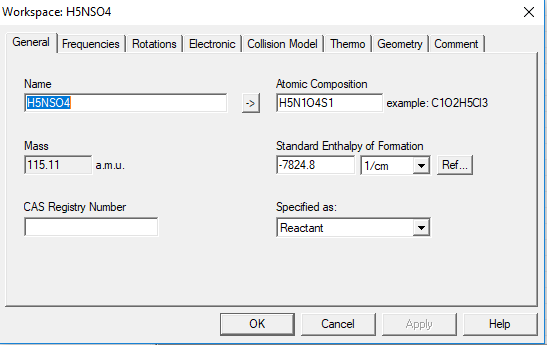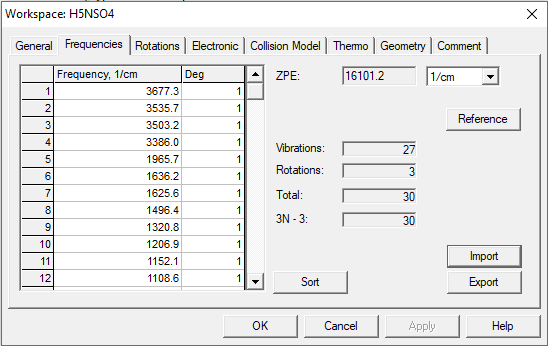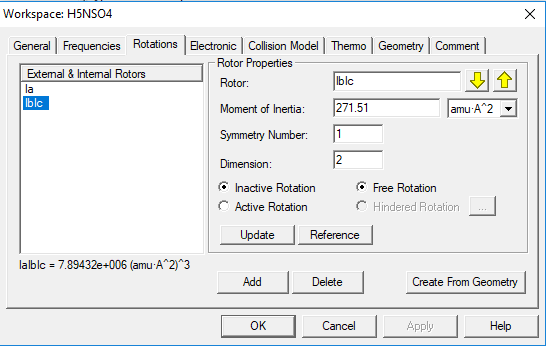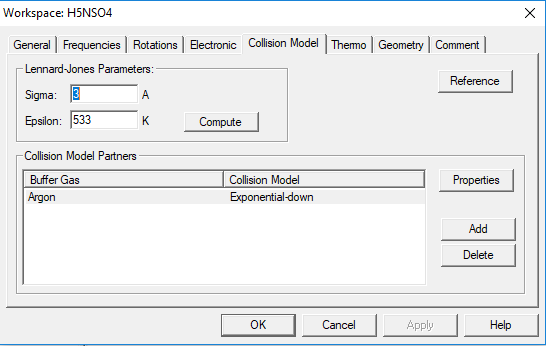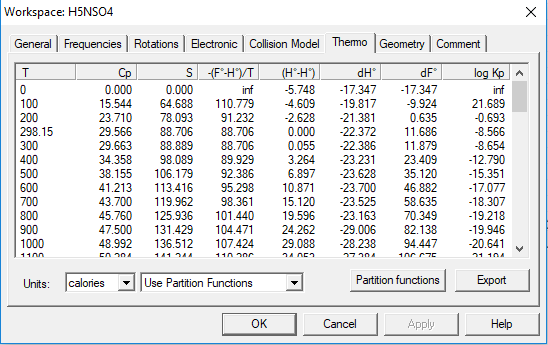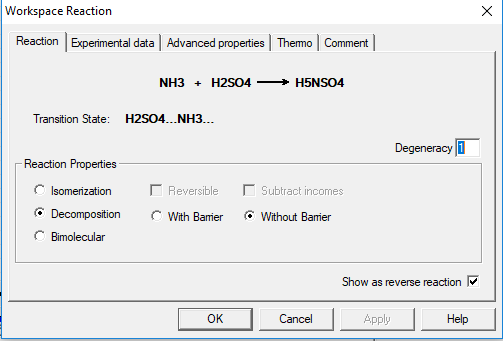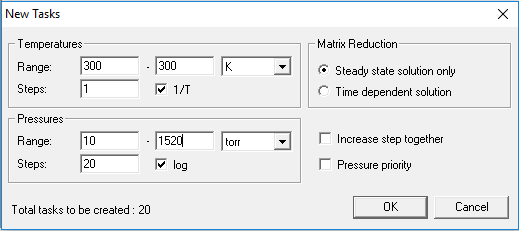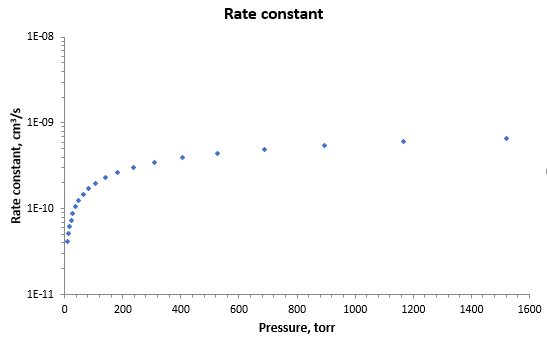Chemistry is made of reactions. One important perspective of chemical reaction is its rate (or how fast it goes). The rate is typically defined as the number of molecules change in unit time. For a simple elementary step, the rate can be expressed as product of a rate constant and reactants concentrations.
Unimolecular reactions is a type of reaction with A->B or A->B + C which single reactant. It’s rate constant is found to be (external) pressure dependent. Because for A to surpass the energy barrier to form B (or C), it needs to be activated first. It can be either activated by photon, chemical reaction, or another molecule through thermal collision. For collision with a third molecule M first, that third molecule can be either A, B, C or another buffer gas molecule D.
RRKM theory is proposed for calculating unimolecular reaction rate constants. A good detailed explanation of RRKM theory can be found here
In this tutorial we will show how to use Chemrate and Gaussian09 to calculate the pressure dependent reaction rate of H2SO4 + NH3 -> H2SO4-NH3 Since the above equation is bimolecular, we need to calculate its reverse reaction H2SO4-NH3 -> H2SO4 + NH3 Which is unimolecular, and use the Keq = kf / kb to calculate the forward bimolecular reaction rate constant.
- First step is to get the energy, vibrational frequencies, and equilibrium geometries of NH3 , H2SO4, and H2SO4-NH3. This can be done in Gaussian09.
- Second step is to create a database of components in Chemrate. A component has several properties as shown in the following screen shots.
Same thing can be done for NH3 and H2SO4.
- Once we have a data base of all the reactant and products. We can proceed to create chemical reaction(s) using these components. Since we know for the acid base combination, there is no reaction barrier, we can select “Without Barrier” and create variational transition state using Chemrate’s own procedure. The reaction and energy diagram is shown below.
We can also add chemical or custom activation for the active components. But here we just use collision activations.
- Once we have the reaction, we can proceed to create tasks for computing the rate constant. The tasks are composed of different levels of pressures and temperatures and the method to solve the RRKM-Master Equation.
- Once tasks are created, we can compute all for these tasks. The results for the foward unimolecular and reverse bimolecular reaction rate constants will be calculated, including other useful informations, such as micro-canonical rate costants, density of states, sum of states, etc.
Below, I’ve shown the calculate bimolecular recombination rate constants of NH3 and H2SO4 as a function of external pressure (Argon as Buffer gas). The high pressure limit rate constant just corresponds to the rate constant calculated using traditional Transition State Theory (TST).
